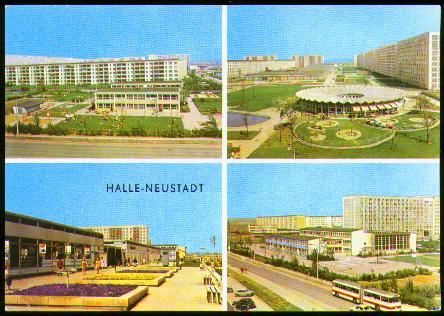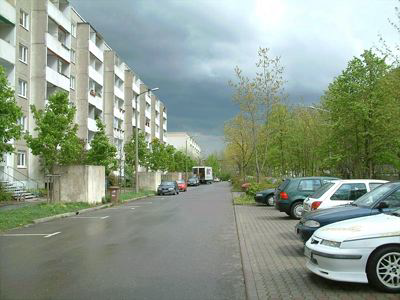No Light Rail in Vancouver!
Sustainability, Climate Change, and Urban Planning

In addition to talking about sprawl and urban-

The most sustainable city?
Many planning advocates take it for granted that sprawl and auto driving are inherently unsustainable. McShane shows just how this attitude can go when he describes Halle Neustadt, which some Swedish urban planners once described as “the most sustainable city in the world.”

The most-
McShane here refers to some field work done by the Antiplanner. To make a long story short, what made Halle Neustadt “sustainable” was poverty, and as soon its residents gained some wealth, many of them moved out and most of the rest bought automobiles, turning the cities many greenspaces into parking lots.
Owen then turns to climate change, which he describes as the last gasp of smart growth.
Smart growth, he notes, “has always been a policy in search of a justification, a
solution in search of a problem.” Now, in climate change, smart-
One difficulty, McShane notes, is that there is no guarantee that smart growth is
really more greenhouse-
McShane refers in particular to an Australian study that found that “place doesn’t
matter,” that is, low densities were not particularly greenhouse unfriendly. Instead,
income was much more important, meaning that the high-
A second problem is that new technologies can render calculations about greenhouse gases completely invalid. “If New Zealand adopted nuclear energy next year, calculations of future carbon footprints would change dramatically,” McShane points out. “The error terms are so huge as to make the exercise (of measuring carbon footprints) meaningless.”
No one can predict technological change, but planning advocates often interpret this to mean there will be no change. James Howard Kunstler, for example, believes that “No combination of alternative fuels will allow us to run American life the way we have been used to running it.”
Neither McShane nor the Antiplanner agree. I can’t predict what fuel we will use in the future, but I am fairly certain that we will still be driving personal vehicles with four wheels.
3
Trackback • Posted in Regional planning
Reprinted from The Antiplanner